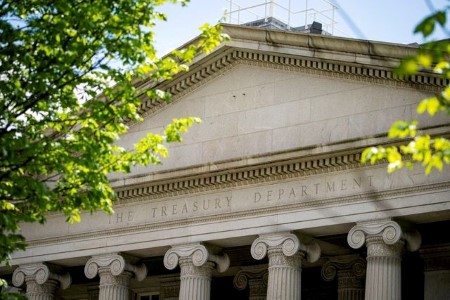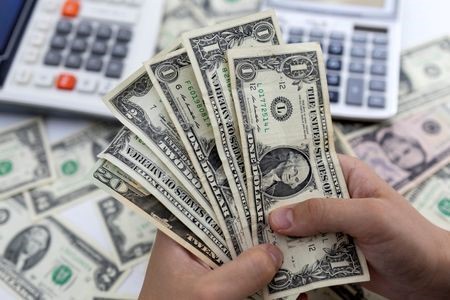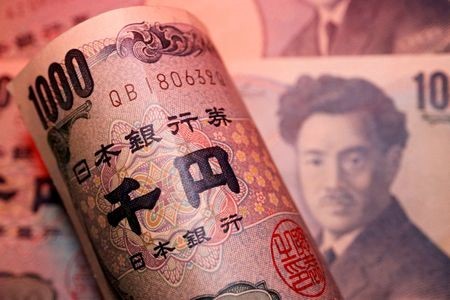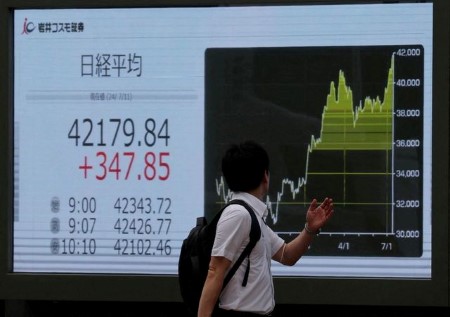ORLANDO – Investor positioning in US Treasury futures is stretching to extreme – and in some cases, record – levels that are likely to revive concerns about potential liquidity and stability risks in the world’s largest and most systemically important bond market.
The growth in asset managers’ “long” and leveraged funds’ “short” positions comes as slowing inflation and cooling economic activity suggest the Fed will begin its interest rate-cutting cycle sooner rather than later.
It’s unclear whether these moves are being driven by the so-called “basis trade”, where leveraged hedge funds arbitrage small price differences between cash Treasuries and futures, a trade funded via the overnight repo market.
Essentially, funds sell Treasury futures and asset managers are the buyers. Financial authorities and regulators have warned of the financial stability risks if these funds, some levered up to 70x, are forced to quickly cover their positions.
What is becoming increasingly clear, however, is the US bond market is at an inflection point in terms of Fed policy, while the longer-term fiscal outlook remains highly challenging, to say the least.
The potential for a price shock or policy misstep cannot be ignored. What if, for example, a sharp deterioration in economic or labor market data prompts the Fed to cut rates by 50 basis points in September instead of the anticipated 25 bps?
This is the backdrop to the latest Commodity Futures Trading Commission figures that show asset managers’ and leveraged funds’ positions are at or close to record levels, especially at the front end of the yield curve.
CFTC data show that asset managers’ aggregate long positions across two-, five- and ten-year futures were worth a record USD 1.083 trillion in the week to July 9. That has expanded nearly 30% since March.
Leveraged funds’ aggregate short position across the curve now stands at USD 1.00 trillion, up around 25% from March and nudging last November’s record high of USD 1.01 trillion.
Within that, asset manager longs and leveraged fund shorts in the five-year space are at all-time highs of USD 373 billion and USD 321 billion, respectively, while asset managers’ long position in two-year futures was a record USD 477 billion in the week to July 2.
A long position is effectively a wager that an asset will rise in value, and a short position is a bet that its price will fall.
FUNCTIONING SMOOTHLY
Adjusted for duration, smoothing out the overall market’s sensitivity to movement in Treasury yields, positions across the curve are at record levels, according to Matt King, founder of financial market research and consultancy firm Satori Insights.
As long as these offsetting positions can be matched off when one side decides to cut them, the market will continue to function smoothly. Historically, market-making broker-dealers would plug any gap, but that role is now being filled by clearing houses.
The bigger the positions, the bigger the potential hole is created by a rapid reversal. Regulators do not want a repeat of March 2020 when a disorderly unwind of hedge funds’ short positions triggered severe volatility and illiquidity in the Treasury market.
Matt King at Satori Insights says that doesn’t appear to be on the immediate horizon. He notes that a healthy, liquid market should indeed have a diverse investor base spanning hedge funds and ‘real money’, long-term and short-term, and value-oriented and momentum-oriented players.
But the size of the positions being accumulated bears monitoring.
“You can think of this as potentially putting pressure on the pipes, but if everything’s being centrally cleared and properly margined – as opposed to needing to go through dealer balance sheets – you may well be able to cope with those volumes,” King says.
“The worry comes if you really delve into the weeds of the settlement process and conclude the pipes can’t take the strain. But I’m not quite ready to draw that conclusion as things stand,” he adds.
(The opinions expressed here are those of the author, a columnist for Reuters.)
(By Jamie McGeever)







 DOWNLOAD
DOWNLOAD













